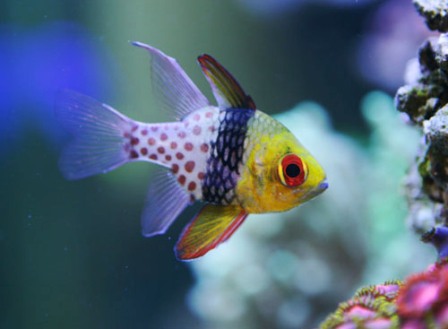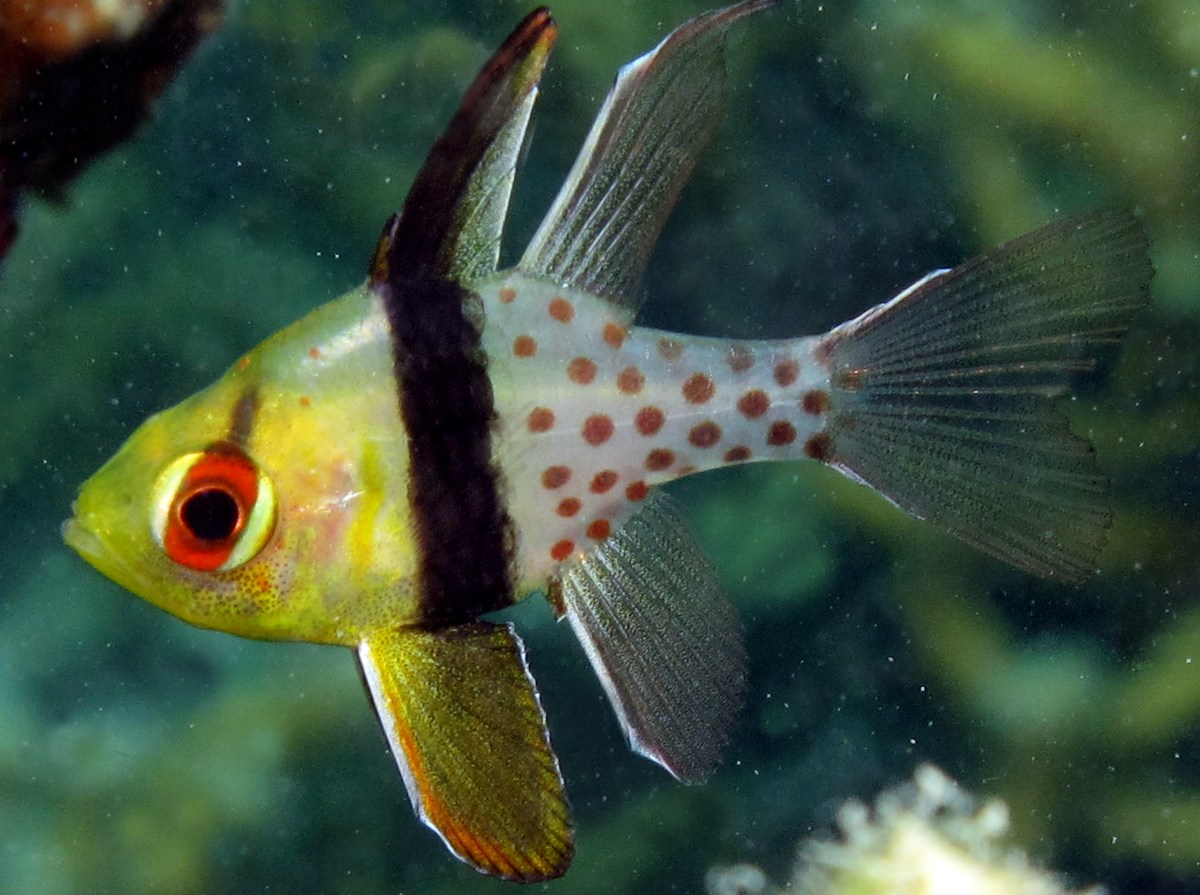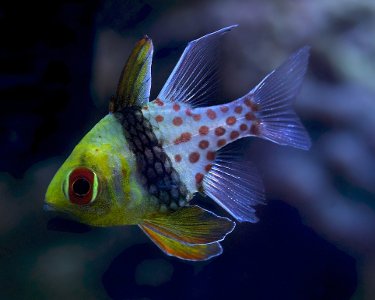
Sphaeramia nematoptera
FAMILY
Apogonidae
TAXONOMY
Sphaeramia nematoptera (Bleeker, 1856), Manado, Sulawesi
(Celebes), Indonesia.
OTHER COMMON NAMES
English: Coral cardinalfish, polka-dot cardinalfish; Japanese:
manjы-ishimochi; Malay: Capungon; Tagalog: Suga.
PHYSICAL CHARACTERISTICS
Body somewhat deep with large eyes; large, extended fins; and
a slightly forked caudal fin. The skin has bioluminescent
bands. There are two dorsal fins; the first has 7 spines and the
second 1 spine and 9 soft rays. The anal fin has 2 spines and 9
soft rays. There are 12–14 soft rays on the pectoral fin. The
head and gills are yellow that grades into a broad brown band
that extends from the dorsal fin to the posterior portion of the
pelvic fin. Posterior to the band, the body is a pale luminescent
white with numerous brown spots. The second dorsal fin,
anal fin, and caudal fin are clear but edged with luminescent
white. The anterior portion of the pelvic fin is yellow and the
eye is bright red. This species is sexually dimorphic for body
size, with females slightly larger on average but males with
deeper bodies and larger heads. Grows to 3.1 in (8 cm) in total
length.
DISTRIBUTION
Western Pacific, from Java, Indonesia, east to New Guinea,
Palau, and Pohnpei in the Caroline Islands, and north to the
Mariana and Ryukyu islands.
HABITAT
Usually found in protected bays, lagoons, and backreefs among
the branches of Porites corals.
FEEDING ECOLOGY AND DIET
Feeds upon plankton in the water column. Preyed upon by
larger roving and ambush predatory fishes.
BEHAVIOR
Aggregates in coral branches during daylight and disperses
along the bottom at night.
REPRODUCTIVE BIOLOGY
Not well known in nature. May possess a promiscuous mating
system with multiple spawning events during a season.
Males incubate the eggs orally. The incubation period varies
with water temperature; eggs of a congener hatched after
eight days at water temperatures of 80–86° F (27–30° C).
The larvae are pelagic. This species has also been bred in
captivity.
CONSERVATION STATUS
Not listed by the IUCN.
SIGNIFICANCE TO HUMANS
Popular in the aquarium trade.
Photo Gallery of - Pajama cardinalfish





 Animalia Life
Animalia Life